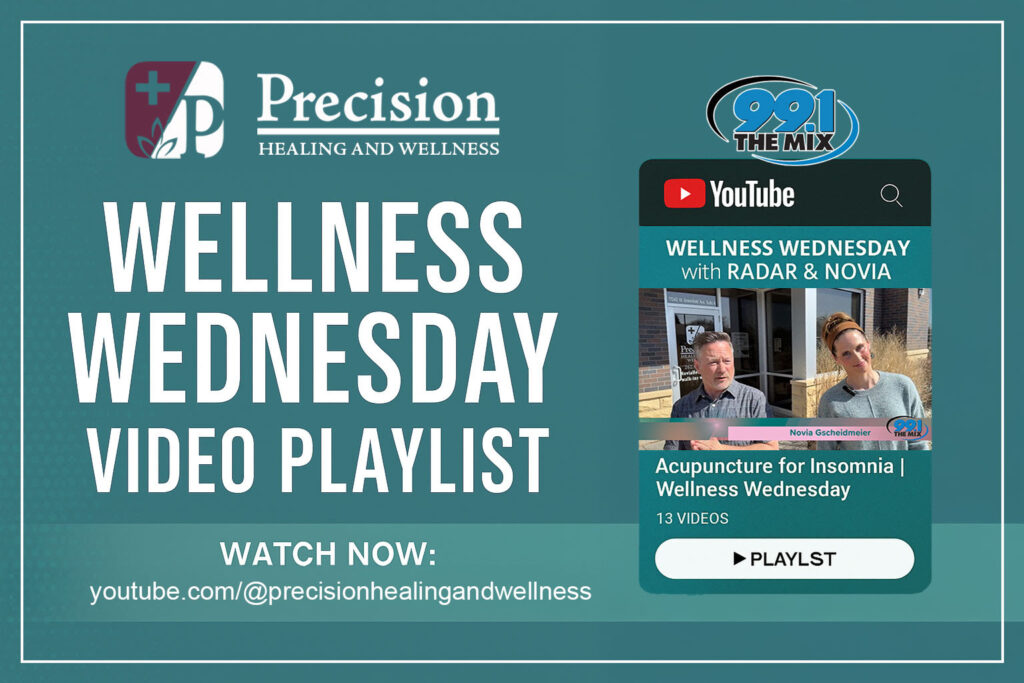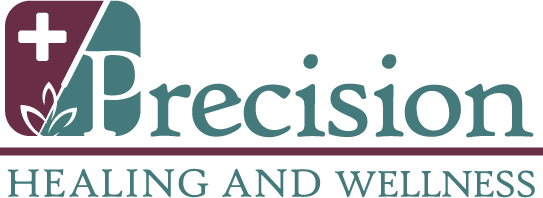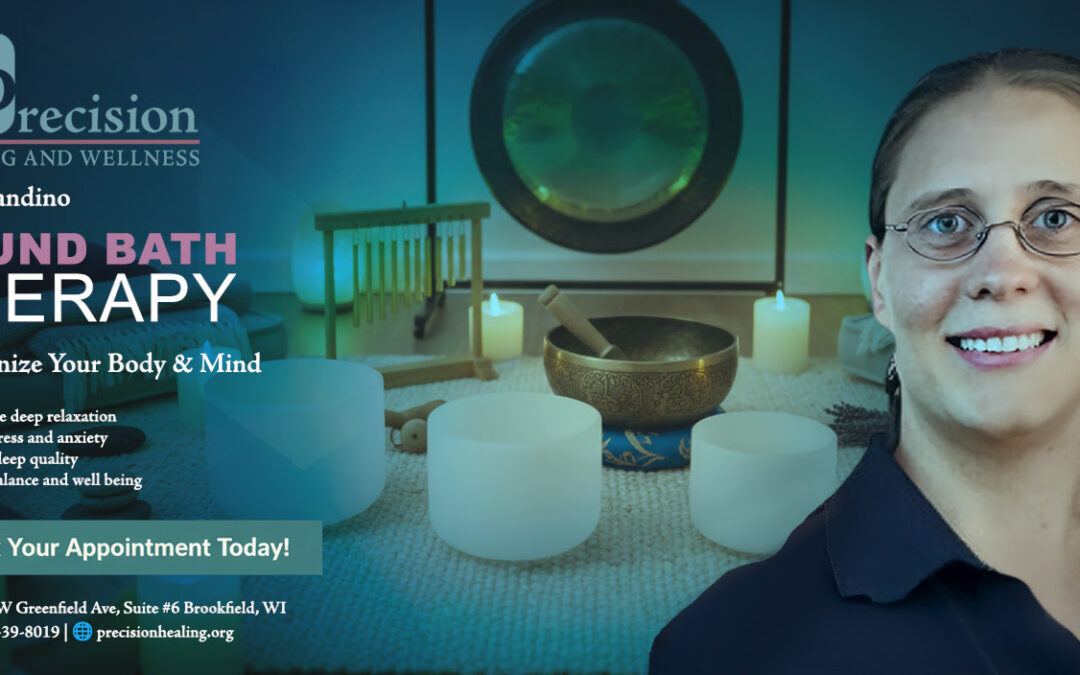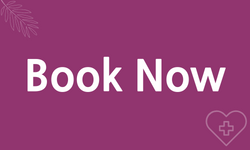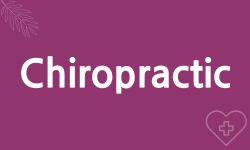Sound baths are showing up everywhere — wellness centers, yoga studios, and holistic clinics — but what are they, and do they actually help? As your Brookfield health and wellness clinic, we dug into the research so you can see the scientific picture clearly. Below you’ll find an evidence-based overview of sound bath therapy (what it is, how it works, what studies say), practical benefits people report, caveats researchers raise, and how you can try a session with a trained practitioner at Precision Healing and Wellness.
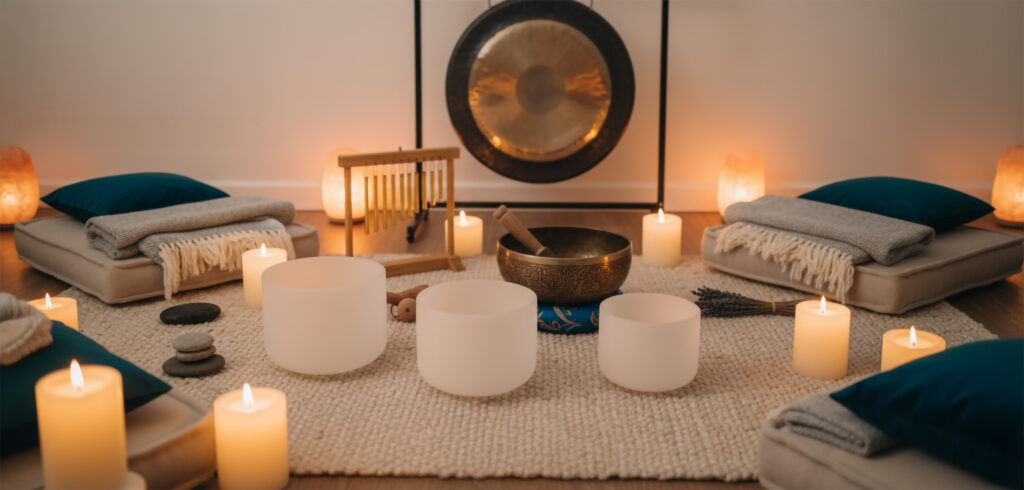
What is a sound bath?
A sound bath is a guided listening experience where participants lie or sit comfortably while a practitioner plays resonant instruments – most commonly Tibetan or Himalayan singing bowls, crystal bowls, gongs, chimes, or tuning forks. Rather than “listening” in the usual sense, attendees are invited to receive the sound: immersive tones create a meditative environment intended to reduce stress, encourage relaxation, and support introspection.
Sound baths are non-invasive, typically 20–60 minutes long, and often paired with dim lighting, gentle guidance, and optional additions such as aromatherapy or light touch therapies.
How might sound baths affect the body and brain?
Researchers point to several likely mechanisms:
Autonomic nervous system regulation. Low-frequency, repetitive sounds and predictable rhythms can promote parasympathetic activation (the “rest-and-digest” response), which lowers heart rate and can improve heart rate variability (HRV). Increased HRV is commonly associated with better stress resilience.
Brainwave modulation. Meditative states are accompanied by shifts in EEG patterns (notably alpha and theta band activity). Sound-mediated meditation and guided listening can increase alpha/theta power, which correlates with relaxed alertness and reduced rumination.
Emotional processing and mood alteration. Sound and music can influence mood via limbic pathways (brain regions tied to emotion). Studies of singing-bowl and sound-meditation participants report reductions in tension, anxiety, and depressed mood after sessions.
Physiological stress markers. A subset of studies points to reductions in blood pressure, heart rate, and even cortisol (the stress hormone) following sound or music interventions – though findings do vary.
What does the peer-reviewed evidence say?
While sound bath research is still emerging, there are several notable, peer-reviewed papers and reviews worth highlighting:
- Goldsby et al., “Effects of Singing Bowl Sound Meditation on Mood, Tension, and Well-being” (Journal of Evidence-Based Complementary & Alternative Medicine) — This widely cited observational study (n≈62) found significant pre/post reductions in tension, anger, fatigue, and depressed mood after singing-bowl sound meditation sessions. Participants reported improved well-being and reduced anxiety measures. PMC
- EEG and meditation studies — Multiple investigations show that brief meditative interventions produce measurable changes in EEG spectra (alpha/theta increases), which are associated with relaxed, reflective states. These findings help explain why sound-based meditations often feel calming and mentally clearing to participants. PMC+1
- Heart rate variability and stress response — Several smaller trials and case reports indicate improved HRV and reductions in stress indices after singing-bowl or gong-based sessions, suggesting increased parasympathetic activity (i.e., more relaxation). Results are promising but sample sizes tend to be small and study designs vary. Wellness Space+1
- Systematic and scoping reviews (recent) — Reviews of sound and music interventions generally find evidence that auditory interventions reduce anxiety and stress, improve mood, and support relaxation across clinical and non-clinical populations — though authors consistently call for larger randomized controlled trials to confirm and refine findings. PMC+1
Bottom line from the science: preliminary and growing evidence supports sound bath therapy as a safe, low-risk tool for reducing subjective stress and promoting relaxation. Physiological markers (HRV, cortisol, EEG) often change in ways that match reported improvements in mood, but more rigorous randomized trials are needed to define effect sizes, optimal session length, and which instruments or protocols work best for different populations.
Reported benefits — what clients tend to notice
Across studies and real-world practice, these are the most commonly reported benefits:
- Immediate relaxation and reduced anxiety — many participants feel calmer during and after a session; anxiety scores commonly drop.
- Improved sleep and reduced insomnia symptoms — people often report sleeping better after incorporating sound sessions into their routine.
- Lowered physical tension and pain relief — some studies and case reports note reduced pain reports and muscle tension following sound baths, possibly via reduced sympathetic arousal and increased parasympathetic tone.
- Improved mood and mental clarity — mood, focus, and the subjective sense of wellbeing frequently improve after a session.
- Enhanced meditative depth for beginners — for people who struggle with quiet-mind meditation, sound baths provide an accessible focal point that helps enter meditative states.
Who benefits most — and who should take care?
Good candidates include people experiencing stress, mild anxiety, tension headaches, trouble sleeping, or simply those seeking restorative relaxation. Sound baths are low-risk, non-pharmacological, and often accessible to a wide audience.
Use caution / consult first if you:
- Have a history of severe psychiatric conditions (psychosis, uncontrolled bipolar disorder). A sound bath can be intense; check with a mental health professional first.
- Have epilepsy — certain rhythmic sounds and flashing lights (if used) might be a trigger.
- Are pregnant and concerned about lying supine for long periods — speak with your provider about positioning.
As with any wellness offering, sound baths are best used as part of a broader, individualized plan. They complement acupuncture, massage, chiropractic care, and clinical therapies, but are not a replacement for medical or psychiatric treatment.
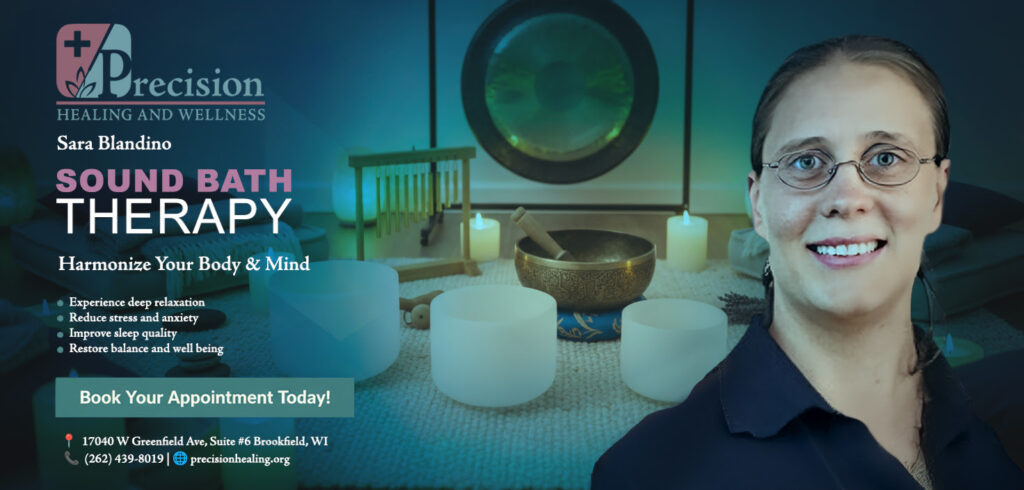
Meet Sara Blandino – your Brookfield practitioner
Book your appointment today with Sara Blandino, a graduate of Blue Sky School of Professional Massage who brings a blended skill set to Precision Healing & Wellness in Brookfield. Sara’s qualifications and specialties include:
Sound bath therapy — trained in sound bath/gong techniques
Aromatherapy — skillfully integrating scent to deepen relaxation safely.
Cupping & hot stones — used as complementary modalities for muscular tension and circulation.
Precision Neuromuscular Therapy (PNMT) — targeted soft-tissue work to address chronic muscle pain and trigger points.
Sara’s training in both hands-on and energetic modalities allows her to safely blend sound work with massage, PNMT, and aromatherapy — offering patients an integrated path to stress reduction, pain relief, and improved sleep.
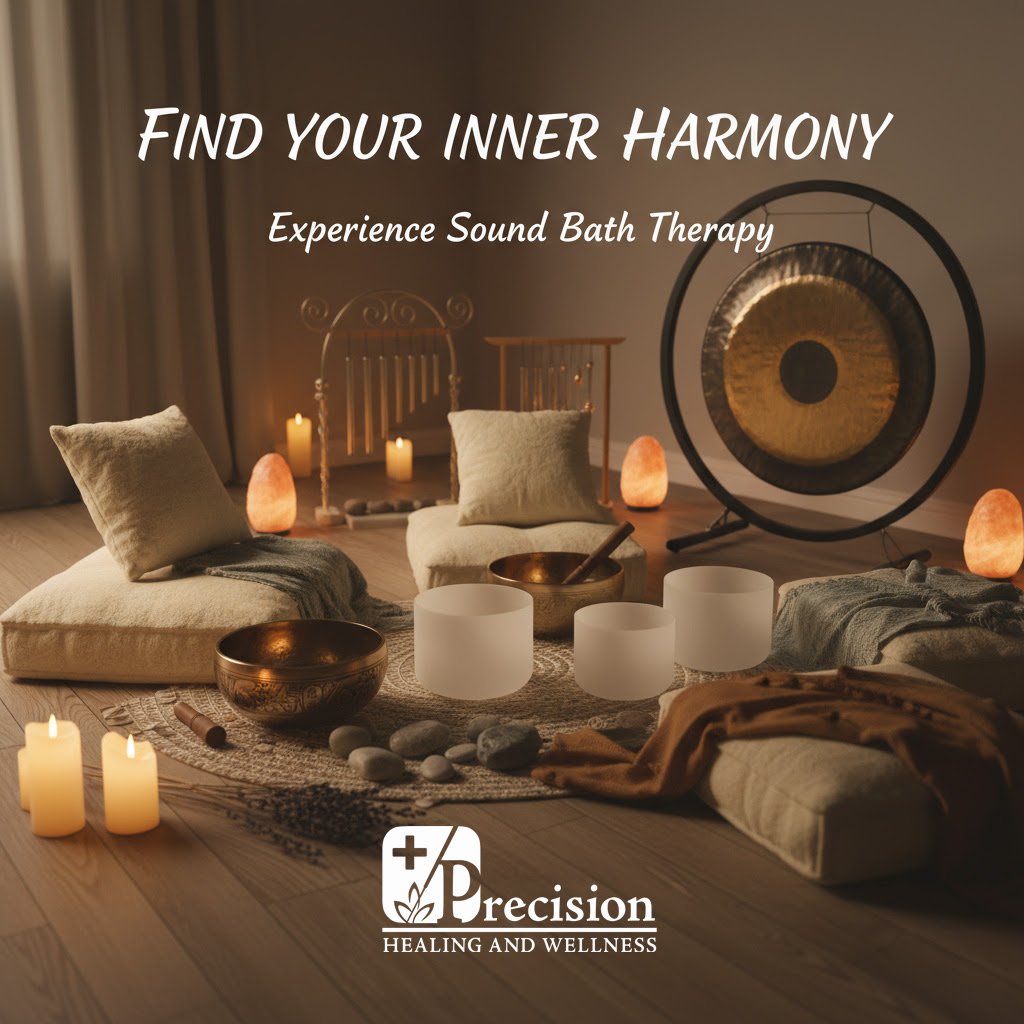
Practical tips before you book
Arrive early to settle in; sound sessions are best enjoyed from a relaxed baseline.
Hydrate before and after your session — reduced sympathetic tone can make you feel mellow.
Aftercare: allow 30–60 minutes of quiet after a session before driving if you feel very relaxed or drowsy.
What to expect from results
Many clients notice immediate relaxation and clearer thinking after a single session; more persistent sleep or anxiety improvements are often seen with weekly or biweekly sessions for several weeks. As research suggests, a combination of subjective improvement (how you feel) and objective changes (HRV, EEG shifts) can accompany sustained practice. PMC+1
Limitations & the scientific caveats
- Study sizes and designs vary. Many trials are small, observational, or pilot studies. While results are promising, larger randomized controlled trials are needed to prove efficacy and define best practices. ScienceDirect+1
- Placebo and expectation effects exist. The ritual, attention, and relaxing environment of sound baths contribute to benefits and are hard to separate from the sound itself. That said, even if part of the benefit comes from ritual, the outcomes (less stress, better sleep) are still meaningful for clients. PMC+1
Ready to try a sound bath?
If you’re curious about sound therapy and want to experience it with a trained practitioner, book an appointment with Sara Blandino at Precision Healing & Wellness in Brookfield, WI. Sara blends evidence-informed practice with a gentle, client-centered approach to support your unique wellness goals.
Book now:
Precision Healing and Wellness
17040 W Greenfield Ave, Suite #6, Brookfield, WI
Call: (262) 439-8019
Selected sources & further reading
- Goldsby TL, Goldsby ME, McWalters M, Mills PJ. Effects of Singing Bowl Sound Meditation on Mood, Tension, and Well-Being: An Observational Study. J Evid Based Complementary Altern Med. 2017. PMC
- Stapleton P, et al. Large effects of brief meditation intervention on EEG and mood. 2020. (EEG meditation effects). PMC
- Engelbregt H. Controlled EEG study on meditative music and paired meditation. 2022. digitalcommons.ciis.edu
- Reviews and scoping overviews on sound/music interventions and stress reduction (2024–2025) — these syntheses describe consistent reductions in anxiety and stress but call for larger RCTs. PMC+1
- Studies and white papers on HRV and singing-bowl sessions (case reports and small trials). Wellness Space+1
Final note
Sound baths are an accessible, low-risk tool to add to your wellness routine. The research is encouraging. Participants regularly report less stress, better sleep, and clearer minds — and physiological studies back up many of those changes. If you want to explore how sound work can support your health goals, Sara Blandino at Precision Healing and Wellness is ready to guide you through a safe, calming, and scientifically informed experience.
Let’s Keep the Conversation Going
We recently partnered with 99.1 The Mix to bring you Wellness Wednesdays — real
conversations and insights on fertility, women’s health, acupuncture, massage, and more.
Subscribe and watch our previous episodes now on YouTube:
youtube.com/@precisionhealingandwellness
